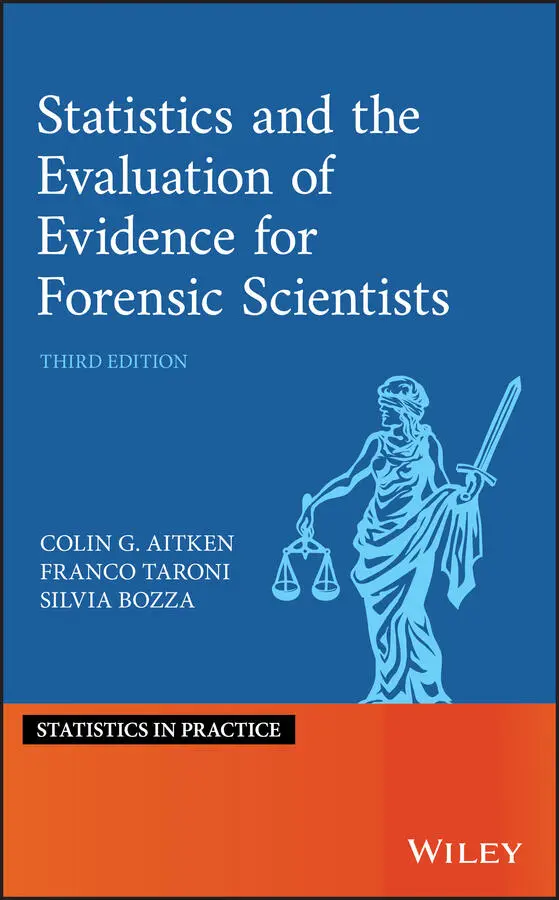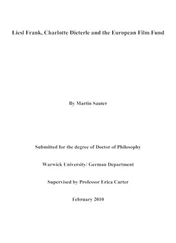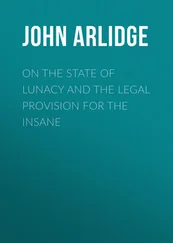Franco Taroni - Statistics and the Evaluation of Evidence for Forensic Scientists
Здесь есть возможность читать онлайн «Franco Taroni - Statistics and the Evaluation of Evidence for Forensic Scientists» — ознакомительный отрывок электронной книги совершенно бесплатно, а после прочтения отрывка купить полную версию. В некоторых случаях можно слушать аудио, скачать через торрент в формате fb2 и присутствует краткое содержание. Жанр: unrecognised, на английском языке. Описание произведения, (предисловие) а так же отзывы посетителей доступны на портале библиотеки ЛибКат.
- Название:Statistics and the Evaluation of Evidence for Forensic Scientists
- Автор:
- Жанр:
- Год:неизвестен
- ISBN:нет данных
- Рейтинг книги:3 / 5. Голосов: 1
-
Избранное:Добавить в избранное
- Отзывы:
-
Ваша оценка:
Statistics and the Evaluation of Evidence for Forensic Scientists: краткое содержание, описание и аннотация
Предлагаем к чтению аннотацию, описание, краткое содержание или предисловие (зависит от того, что написал сам автор книги «Statistics and the Evaluation of Evidence for Forensic Scientists»). Если вы не нашли необходимую информацию о книге — напишите в комментариях, мы постараемся отыскать её.
he leading resource in the statistical evaluation and interpretation of forensic evidence
The third edition of
is fully updated to provide the latest research and developments in the use of statistical techniques to evaluate and interpret evidence. Courts are increasingly aware of the importance of proper evidence assessment when there is an element of uncertainty. Because of the increasing availability of data, the role of statistical and probabilistic reasoning is gaining a higher profile in criminal cases. That’s why lawyers, forensic scientists, graduate students, and researchers will find this book an essential resource, one which explores how forensic evidence can be evaluated and interpreted statistically. It’s written as an accessible source of information for all those with an interest in the evaluation and interpretation of forensic scientific evidence.
Discusses the entire chain of reasoning–from evidence pre-assessment to court presentation; Includes material for the understanding of evidence interpretation for single and multiple trace evidence; Provides real examples and data for improved understanding. Since the first edition of this book was published in 1995, this respected series has remained a leading resource in the statistical evaluation of forensic evidence. It shares knowledge from authors in the fields of statistics and forensic science who are international experts in the area of evidence evaluation and interpretation. This book helps people to deal with uncertainty related to scientific evidence and propositions. It introduces a method of reasoning that shows how to update beliefs coherently and to act rationally. In this edition, readers can find new information on the topics of elicitation, subjective probabilities, decision analysis, and cognitive bias, all discussed in a Bayesian framework.


 relative to
relative to  of evidence
of evidence  with... Table 2.7 Value of the evidence for each genotype, given genotypic relative f... Table 2.8 Qualitative scale for reporting the value V of the support of the ev... Table 2.9 Verbal scale of support
with... Table 2.7 Value of the evidence for each genotype, given genotypic relative f... Table 2.8 Qualitative scale for reporting the value V of the support of the ev... Table 2.9 Verbal scale of support  for a null hypothesis NH proposed by Jeffr... Table 2.10 Verbal scale of support for a likelihood ratio
for a null hypothesis NH proposed by Jeffr... Table 2.10 Verbal scale of support for a likelihood ratio  proposed by Nordga... Table 2.11 The values of the logarithm of the posterior odds in favour of an ...Table 2.12 Probability
proposed by Nordga... Table 2.11 The values of the logarithm of the posterior odds in favour of an ...Table 2.12 Probability  of at least one match, given a relative frequency of ...Table 2.13 Evidence occurs with
of at least one match, given a relative frequency of ...Table 2.13 Evidence occurs with 
 .Table 2.14 The probability,
.Table 2.14 The probability,  , of at least one match with the evidence, which ...Table 2.15 The ‘
, of at least one match with the evidence, which ...Table 2.15 The ‘  ’ loss function, for
’ loss function, for  .Table 2.16 Loss function for the Bayesian decision network shown in Figure 2....
.Table 2.16 Loss function for the Bayesian decision network shown in Figure 2.... for refractive index
for refractive index  of glass for mea...Table 3.5 Variation in the likelihood ratio
of glass for mea...Table 3.5 Variation in the likelihood ratio  , as given by (3.7), with sample ...
, as given by (3.7), with sample ... % certain that the proportion of uni...Table 4.3 Probabilities all
% certain that the proportion of uni...Table 4.3 Probabilities all  inspected units contain drugs for
inspected units contain drugs for  in a populat...Table 4.4 Definitions of nodes used in the Bayesian network shown in Figure 4...Table 4.5 Definitions of nodes used in the Bayesian networks shown in Figure ...Table 4.6 Estimates of quantities
in a populat...Table 4.4 Definitions of nodes used in the Bayesian network shown in Figure 4...Table 4.5 Definitions of nodes used in the Bayesian networks shown in Figure ...Table 4.6 Estimates of quantities  of drugs, in a consignment of
of drugs, in a consignment of  units, acc...Table 4.7 Estimates of quantities
units, acc...Table 4.7 Estimates of quantities  of drugs, in a consignment of
of drugs, in a consignment of  units, acc...Table 4.8 Sensitivity of the optimal decision on the alcohol level (g/kg) to ...Table 4.9 Definitions of the nodes used in the influence diagram shown in Fig...
units, acc...Table 4.8 Sensitivity of the optimal decision on the alcohol level (g/kg) to ...Table 4.9 Definitions of the nodes used in the influence diagram shown in Fig...










